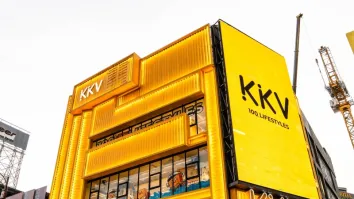Zebra Technologies, Amazon, Microsoft emphasise focus on trust, data and technologies amidst changing shopping behaviours
Customers are now moving towards omnichannel shopping, but retailers must keep in mind that online and in-person shopping are not binary choices.
Shoppers' expectations have clearly changed recently, as the world moves to the new normal. Though customers are going back to stores more often than before, they look forward to experiencing the online retail experience when they step into brick-and-mortar stores, and vice versa, thereby creating an expectation for today’s retail journey to be a combination of both.
Given this, shoppers not only seek the convenience of retail shops, but also customer experience and instant gratification of in-store experiences.
Three industry leaders — George Pepes, APAC Vertical Solutions and Marketing Lead for Retail, Healthcare, and Hospitality at Zebra Technologies; Jan Lim, Country Manager for Singapore Marketplace at Amazon; and Harsha Illindala, Industry Advocate Director, World Wide Retail & Consumer Goods at Microsoft — discussed these trends and challenges in retail in the recent webinar, “Future of Retail: Top Tech Trends Shaping Omnichannel Success in 2023.”
During the event, Pepes presented key highlights from Zebra’s 15th Annual Global Shopper Study. The study found that shoppers today continue choosing online or in-store retailer for the same key reasons: availability, selection, and price.
The study also found that many retail associates (78%) and retail decision makers (84%) agree that technology is an asset in attracting, training, and retaining workers. In line with this, 82% of decision makers have already set plans to increase technology investments over the next three years, with their top priorities focusing on areas such as increasing automation, improving inventory management and becoming more sustainable.
With shoppers already moving towards omnichannel retail, retailers need to start looking at it from a unified commerce perspective, Zebra Technologies’ Pepes stressed. Online shopping should be considered without disregarding offerings and strategies for in-person stores. From integrating stores with online businesses to building distribution centres for online shopping, retailers have various opportunities to enhance the way they work.
Companies must find a balance between planning for the present and preparing for the future. A key element of an effective omnichannel strategy is good customer experience from ordering to fulfilment.
The point of sale is the best place to show customers how smooth their shopping journeys can get, and retailers are also aware of this fact. As such, they have made transactions as frictionless as possible through mobile wallets and contactless payments.
However, the point of sale is not the only time to improve customer experience. It also goes hand in hand with building trust, investing in technology, and leveraging data.
Building trust, utilising technology
Businesses keep on capturing and maintaining their customers by ensuring that trust is part of the shopping experience, from factors ranging from value of product to delivery experiences. Amazon’s Lim explained that this shows customers that they can have great experiences, quality products, and great after-sales experiences, which could be a driver to reordering.
The same is reiterated by Zebra Technologies’ Pepes, who highlighted the importance of customer experience in building trust and better relationships with shoppers. He pointed out that customer experience not only brings back customers but is also a driving force for them to invest more with a company.
“It's really about building the mechanism to supply customers with the right product at the right time at the right price, which therefore underpins the customer experience,” he said.
Meanwhile, supply chain issues remain to be a major concern for global retail decision-makers as they continue to feel the need to reduce out-of-stocks. Fortunately, retailers have started investing in technology to keep up.
Pepes reminded retailers that when investing in technology, it is important they increase automation. In that, technology does not take over the jobs of associates but instead equips them with the right tools to be able to drive customer engagement as soon as shoppers come in. Ultimately, technology must free up associates’ time so they can stay on the sales floor longer and help customers with their retail decisions.
Additionally, technology must be sustainable enough to offer the same value to customers for long-term use, as well as solve visibility issues in inventory management.
“Instead of having an associate tied up for hours just to make sure that we have the right stock in that certain area in a store, they can utilise technology to speed that process up exponentially,” Pepes explained.
Both retailers and associates also agree that if used effectively, technology can help retain a company’s current workforce and attract manpower.
Focusing on customer data
With inflationary pressures, supply chain, and labour concerns being key challenges in retail today, companies must carefully consider the strategies they implement based on data.
According to Microsoft’s Illindala, creating “strong data backbone” is critical for retail companies and will impact customer experience while also delivering operational efficiencies.
This is similar to comments made by Lim, who stressed that businesses don’t need to try to run to the “next big thing” but instead put enough time to understand how their customers shop, what they are thinking, and whether they should focus on reordering patterns.
Understanding customers comes with gathering data on how to lower customer acquisition costs, improve conversions, drive better marketing, and improve customer experience altogether. Data could also give insight into how to avoid supplier deficiencies, determine nonprofitable inventory, and streamline store operations, amongst others.
Illindala explained: “Understanding customers comes with gathering data on how to lower customer acquisition costs, improve conversions, drive better marketing, and improve customer experience altogether. Data could also give insight into how to avoid supplier deficiencies, determine nonprofitable inventory, and streamline store operations, amongst others. Look at how you can make great customer experiences, from marketing, shopping as well as the fulfilment experience.”
Most importantly, as consumers change their expectations in the new normal, businesses have to stay abreast of the many trends of retail providers and thought leaders. It is good for companies to constantly be looking ahead, being updated through media and resources, upskilling and growing through various channels, and interacting with experts in industry forums.
Watch the full webinar here for more.



















 Advertise
Advertise





